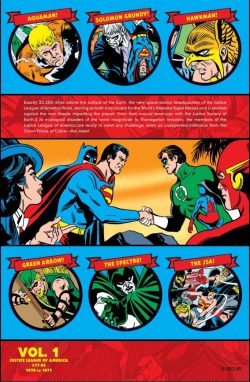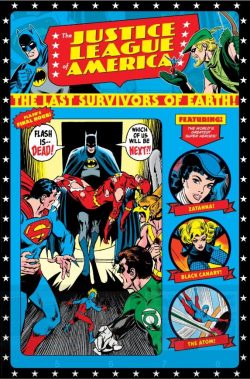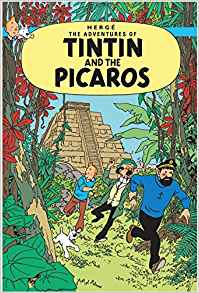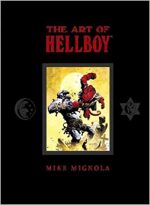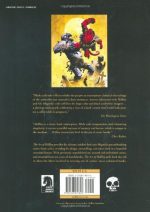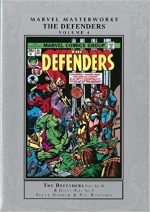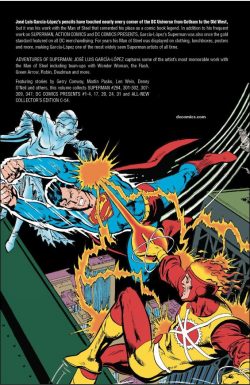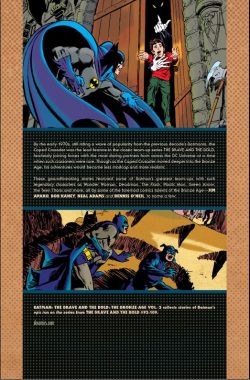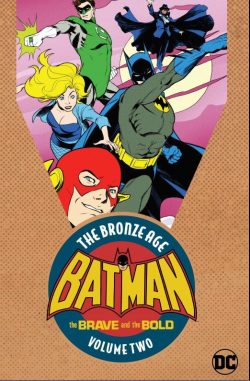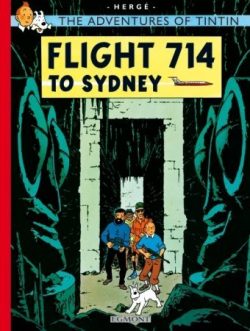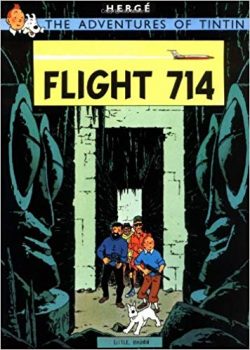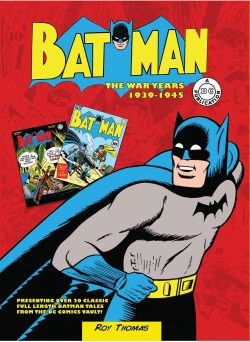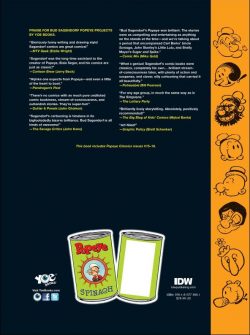
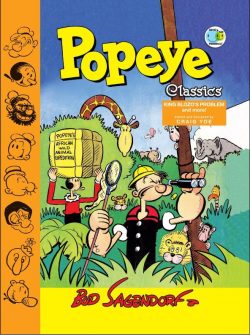
By Bud Sagendorf, edited and designed by Craig Yoe (Yoe Books/IDW)
ISBN: 978-1-61377-936-1(HB) eISBN: 978-1-62302-563-2
Win’s Christmas Gift Recommendation: A Gift for All Sea Sons… 10/10
How many cartoon classics can you think of still going after a century? Here’s one…
There are a few fictional personages to enter communal world consciousness – and fewer still from comics – but a grizzled, bluff, uneducated, visually impaired old sailor with a speech impediment is possibly the most well-known of that select bunch.
Elzie Crisler Segar was born in Chester, Illinois on 8th December 1894. His father was a general handyman, and the boy’s early life was filled with the kinds of solid, dependable blue-collar jobs that typified his generation of cartoonists. He worked as a decorator, house-painter and also played drums; accompanying vaudeville acts at the local theatre.
When the town got a movie-house, he played for the silent films, absorbing all the staging, timing and narrative tricks from keen observation of the screen. Those lessons would become his greatest assets as a cartoonist. It was while working as the film projectionist, at age 18, that he decided to become a cartoonist and tell his own stories.
Like so many others in those hard times, he studied art via mail, in this case W.L. Evans’ cartooning correspondence course out of Cleveland, Ohio, before gravitating to Chicago where he was “discovered†by Richard F. Outcault – regarded by most in the know today as the inventor of modern newspaper comic strips with The Yellow Kid and, later, Buster Brown.
The celebrated cartoonist introduced Segar around at the prestigious Chicago Herald. Still wet behind the ears, the kid’s first strip, Charley Chaplin’s Comedy Capers, debuted on 12th March 1916.
In 1918 Segar married Myrtle Johnson and moved to William Randolph Hearst’s Chicago Evening American to create Looping the Loop, but Managing Editor William Curley saw a big future for Segar and packed the newlyweds off to New York, HQ of the mighty King Features Syndicate.
Within a year Segar was producing Thimble Theatre, which launched December 19th 1919 in the New York Journal. It was a smart pastiche of cinema and knock-off of movie-inspired features like Hairbreadth Harry and Midget Movies, with a repertory of stock players to act out comedies, melodramas, comedies, crime-stories, chases and especially comedies for vast daily audiences. It didn’t stay that way for long…
The core cartoon cast included parental pillars Nana and Cole Oyl; their lanky, highly-strung daughter Olive, diminutive-but-pushy son Castor and the homely ingenue’s plain and (very) simple occasional boyfriend Horace Hamgravy (later known as just Ham Gravy).
Segar had been successfully, steadily producing Thimble Theatre for a decade when he introduced a brusque, vulgar “sailor man†into the everyday ongoing saga of hapless halfwits on January 29th 1929. Nobody suspected the giddy heights that stubborn cantankerous walk-on would reach…
In 1924 Segar created a second daily strip The 5:15: a surreal domestic comedy featuring weedy commuter and would-be inventor John Sappo and his formidable wife Myrtle. This one endured – in one form or another – as a topper/footer-feature accompanying the main Sunday page throughout the author’s career. The feature even survived his untimely death, eventually becoming the trainee-playground of Popeye’s second great humour stylist: Bud Sagendorf.
After Segar’s far-too-premature death in 1938, Doc Winner, Tom Sims, Ralph Stein and Bela Zambouly all worked on the strip, even as the Fleischer Studio’s animated features brought Popeye to the entire world, albeit a slightly different vision of the old salt of the funny pages. Sadly, none of them had the eccentric flair and raw inventiveness that had put Thimble Theatre at the forefront of cartoon entertainments. But then, finally, Bud arrived…
Born in 1915, Forrest “Bud†Sagendorf was barely 17 when his sister – who worked in the Santa Monica art store where Segar bought his drawing supplies – introduced the kid to the master cartoonist who became his teacher and employer as well as a father-figure. In 1958, after years on the periphery, Sagendorf finally took over the strip and all the merchandise design, becoming Popeye’s prime originator…
When Sagendorf became the main man, his loose, rangy style and breezy scripts brought the strip itself back to the forefront of popularity and made reading it cool and fun all over again. Bud wrote and drew Popeye in every graphic arena for 24 years and when he died in 1994, he was succeeded by controversial “Underground†cartoonist Bobby London.
Bud had been Segar’s assistant and apprentice, and – from 1948 onwards – exclusive writer and illustrator of Popeye’s comicbook adventures in a regular monthly title published by America’s king of licensed periodicals, Dell Comics.
When Popeye first appeared, he was a rude, crude brawler: a gambling, cheating, uncivilised ne’er-do-well. He was soon exposed as the ultimate working-class hero: raw and rough-hewn, practical, but with an innate, unshakable sense of what’s fair and what’s not; a joker who wanted kids to be themselves – but not necessarily “good†– and someone who took no guff from anyone…
Naturally, as his popularity grew, Popeye mellowed somewhat. He was still ready to defend the weak and had absolutely no pretensions or aspirations to rise above his fellows, but the shocking sense of dangerous unpredictability and comedic anarchy he initially provided was sorely missed… but not in Sagendorf’s comicbook yarns…
Collected in their entirety in this beguiling full-colour hardback (also available in digital editions) are issues #15-19 of Popeye‘s comicbook series, produced by the irrepressible Sagendorf and collectively spanning January/March 1951 to January/March 1952.
The stunning, almost stream-of-consciousness slapstick stories are preceded as ever by an effusively appreciative Foreword – ‘Society of Sagendorks’ – by inspired aficionado, historian and publisher Craig Yoe, offering a mirthful mission statement and fabulous collation of candid photos and assorted gems of merchandise. Included here are newspaper strips from 1944 when Bud was ghosting the feature for Tom Sims & Bela Zaboly, and assorted Play-Storeactivity segments which Sagendorf contributed to Segar’s Sunday funny pages as his assistant in 1938 all contributing tothe wonder of the ‘Bud Sagendorf Scrapbook’.
Popeye‘s fantastic first issue launched in February 1948, and we rejoin the parade of laughs and thrills three year later with #15 and a single-page two-tone ‘Popeye’s Work Shop!’ detailing how to build a working wooden motorboat and clothespin Olive Oyl doll.
Sagendorf was a smart guy who kept abreast of trends and fashions as well as understanding how kids’ minds worked and these tales are timeless in approach and delivery. ‘Animal Talk’ rockets along from gag to gag as the Sailor Man is captured by a mad scientist who accidentally imparts the ability to communicate with all “aminalsâ€, after which Popeye becomes a constant mouthpiece for the beasts as they seek better conditions, culminating in the old sea dog harbouring an escaped circus ape and setting up a counselling service for fauna…
In a previous episode Popeye set up his own railway and in ‘Train Time!’ faces the wrath of delayed commuters when the service suddenly stops. After his engineer explains why the locomotive must not move, the mallow-hearted mariner finds another way to get those carriages rolling again…
Sagendorf had carte blanche to use any of Segar’s characters and revived one of the oldest and daftest as he pandered to the nation’s TV-fuelled obsession with westerns. ‘Thimble Theatre Presents Ham Gravy in The Boon Brothers Last Boom!!’ sees the dumb lummox wandering the plains as legendary gunslinger Three Gun Gravy and here by the most ridiculous methods ending the criminal careers of a wicked passel of owlhoots…
All comics of the era hosted prose stories to obtain favourable postage rates (it’s far too long and irrelevant a story to deal with here) but Dell opted for a run of early-reader stand-alone yarns that here begin with ‘Bugtown Capers’ wherein a Carnival comes to the little insect township and Larry and Lena Ladybug save a baby minibeast from a riding accident, after which Segar’s other brilliant creation J. Wellington Wimpy carves out his own over-sized portion of cartoon immortality in ‘The Elder Egg!’. Here the infernal optimist’s attempt to eat a gigantic ovoid he’s found prove to be no yolk…
Supplemented by art features ‘How to Draw Wimpy’ and ‘How to Draw a Cow’s Head’, this initial offering ends with an untitled red & black gag page wherein Popeye at sea sends home a houseful of animal mates for Olive and Wimpy to babysit and a full colour back-page jape with the surly sailor teaching an obnoxious diner chef not to call him a wimp…
Popeye #16 (April/June) opens with another superb cover and an activity page of puzzles, incorporating how to make assorted cork toys before ‘New Zoo’ revisits the hero’s bestial communication skills as a convocation of children implore the soft-hearted sailor man to stock a zoo for them. Convinced to ship out for Africa and seek out willing volunteers for exhibits, Popeye is unaware that a greedy hunter and pet trader G. R. Growl has infiltrated his crew with surly saboteurs determined to scupper his endeavours…
Another western-themed railroad yarn follows as ‘Gold Shipment!’ sees Popeye and Olive shipping bullion despite the most nefarious efforts of deadly desperado Jack Terror, after which Wimpy tries to exploit and monopolise the free food at a new burger stand’s ‘Grand Opening!’ before prose vignette ‘Sammy Bug in Deep Water!’ sees the accident-prone arthropod adrift on a leaf in the river…
Innocently skirting the borders of modern bad taste with its “traditional†depiction of a cartoon Red Indian foil, ‘Ham Gravy’ sees the sagebrush sap lose a tribal war over a duck dinner to end the issue – which also includes another activity page of puzzles and ‘How to Draw a Fish’.
Behind another superb Sagendorf gag cover, #17 (July/September) opens – and closes – with a prose ‘Bug Tales’ yarn wherein Larry Ladybug uses archery to battle a hungry Tiger Beetle. The comics content commences with ‘King Blozo’s Problem’ as the ever-anxious monarch of Spinachovia summons Popeye with a dangerously experimental communications device, after which ‘Ham Gravy and his Indian Friend’ play ever-escalating practical jokes on each other over a non-existent gold mountain…
Following the conclusion of the Bug Tales text, an untitled full colour back page gag sees the sailor man fail to lead by example when teaching his friends to forgive and forget…
Ending 1951, Popeye #18 (October/December) offers inner covers text tale ‘Sammy Bug’s Big Leap!’, detailing how not to jump over the moon before ‘Popeye and the Box!’ finds our hero attracting the curiosity of his friends and the unwanted attentions of spies and thugs after agreeing to look after a parcel entrusted to him by his shady dad Poopdeck Pappy…
In ‘Kitty! Kitty!’ the sappy swab adopts a rather unique house pet, whilst his efforts to dig ‘The Tunnel’ through a mountain for his railroad leads to war with a hostile hermit and unexpected consequence for all.
Wimpy’s attempts to secure a free ‘Duck Dinner!’ then inspire shock and awe in deranged roboticist R. O. Spring, before the issue ends with another untitled back-page laugh riot as Popeye goes fishing…
The final issue in this collection (#19, January/March 1952) introduces a new prose star as ‘Otto Octo in a Snappy Cargo!’ sees a playful young cephalopod’s reach exceed his grasp(s) before Popeye enjoys ‘A Thousand Bucks Worth of Fun’ by letting little baby Swee’ Pea wander through the roughest part of town with an extremely high denomination greenback in his tiny fist…
‘Popeye and the Happy Spring’ then sees the cast at sea and encounter magic water that alters their ages, before fresh face Sherm! takes a fantastic ride in a flying wonder car in ‘Hitch Hikers’.
A half-page colour Popeye join-the-dots puzzle and the conclusion of ‘Otto Octo in a Snappy Cargo!’ brings us to one last back page gag with Swee’ Pea using “infink†ingenuity to clean his room without throwing anything away…
Outrageous and side-splitting, these all-ages yarns are evergreen examples of surreal narrative cartooning at its most inspirational. Over the last century Thimble Theatre and its most successful son have delighted readers – and viewers – around the world. This book is simply one of many but definitely top tier entertainment for those who love lunacy, laughter, frantic fantasy and rollicking adventure. If that’s you, add this terrific treasure trove of wonder to your collection.
Popeye Classics volume 4 © 2014 Gussoni-Yoe Studio, Inc. All Rights Reserved. Popeye © 2014 King Features Syndicate. ™ Heart Holdings Inc.

